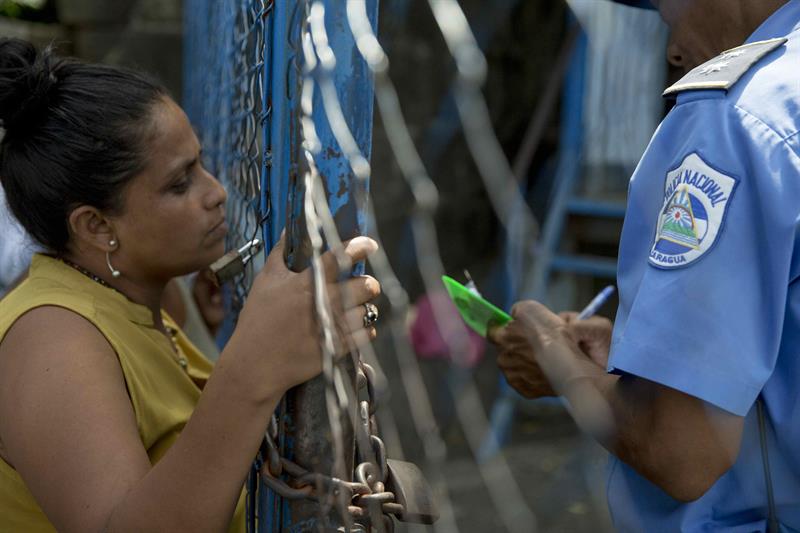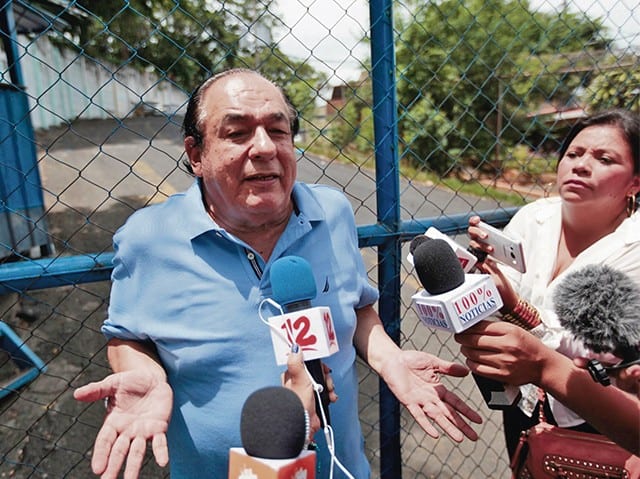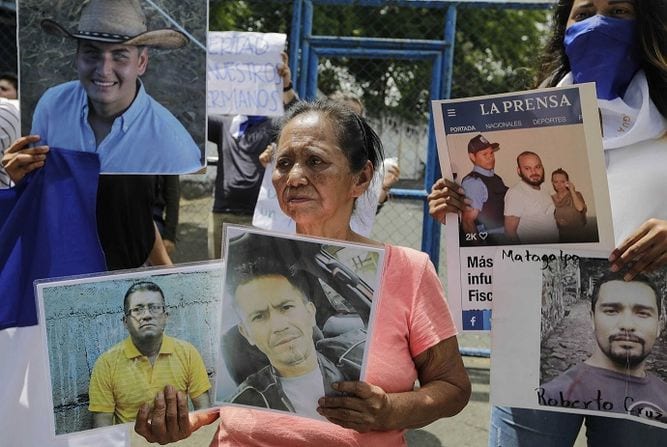Nicaragua’s El Chipote Prison: The Ax Survives its Owner
El Chipote is, according to former inmates, one of Nicaragua’s oldest and most infamous torture centers.

By Jose Luis Rocha (Confidencial)
HAVANA TIMES – Pulled nails, electrical shocks to the testicles, skull-breaking blows, kicks to the stomach, metal shards hidden in meals, asphyxiation using plastic bags, endless interrogation, cells without light or ventilation, foul-smelling water, feces-clogged toilets, AK butt blows, crushed fingers, rapes, death threats and family member threats such as showing captive prisoners videos of their children walking in their neighborhood…according to ex-prisoners, this is El Chipote. Based on their testimony, it has changed little since the times of the Somoza dictatorship.
To the bafflement of many, even after Somoza was ousted, El Chipote continued to serve as a place for the same torture techniques during the revolutionary years in the eighties. As one of the interviewees of the Nobel Literature laureate Svetlana Aleksieivch said in her book The Last of the Soviets, the “ax survives the owner.” Governments change yet El Chipote remains.

It is there that the Legal Auxiliary Department of the Nicaraguan Police runs one of the country’s oldest detention centers. Under the Somoza dictatorship, this center was known as La Loma (The Hill) because of its hilltop location overlooking one of the lagoons of the Nicaraguan capital (Tiscapa). Many regime dissidents and Sandinista guerrillas were tortured in this place, among them Daniel Ortega.
The Sandinista government changed the name but not the purpose of this center in the 80s, which would be known as El Chipote in reference to the mythical mountaintop where Nicaraguan hero Augusto Cesar Sandino set his camp. Many political prisoners of Sandinismo ended up there as well.
In 1985, Nicaraguan state security officials apprehended a group of Guatemalan revolutionaries over ideological differences with the URNG, a Guatemalan umbrella guerrilla organization and sent them to El Chipote, where they were imprisoned for several months. One of them, writer Mario Roberto Morales, described the place. Little has changed since:
“I inspected my cell: there were two bunk beds to my right and two to my left. In front of me, a wall with air vents through which you could see the floor on the other side and nearby the door, a step that you had to climb on to access a shower which was nothing more than a pipe where water came out, with little rusty handles to turn it on. A hole in the middle of the room was where prisoners would go to relieve themselves. I looked up at the roof and saw an air vent where wind flowed, creating a whistling sound and shaking the tin roofing sheets”.
Neither President Violeta Barrios 1990 decree to reconvert it into a national park nor a 2013 bill introduced by opposition legislators prevented the Nicaraguan police from continuing to use El Chipote as a dungeon. There has been a strong pushback against closing this old torture center. Former National Police Commissioner Aminta Granera avoided questions about police actions in El Chipote citing the Sandinista-dominated Parliament’s refusal to summon her.
For over a decade, the Ortega-Murillo regime held Cubans at El Chipote fleeing Cuba’s socialist paradise to go to the United States by crossing into Nicaraguan territory. When the Nicaraguan “migra” – no less ruthless than the US one – arrested the Cubans, they would be held at El Chipote prior to being deported. They were deprived of all legal rights – no lawyers, no phone calls and no visits.
During last April’s insurrection, the old detention and torture center was back in business. An FSLN party flag overlooks El Chipote, stained with the blood of a diversity of dissidents of different caliber: journalists, press directors, students, workers and farmers. Ortega sent them to be tortured at the same detention center where he was tortured. Is this his perverse manner to heal his own wounds?
We should not forget the dozens of mothers who were waiting at the entrance of El Chipote. The mothers of the prisoners filled the streets with images that shook to the core. But these weren’t enough to move Monsignor Waldemar Sommertag (the Vatican ambassador to Nicaragua), who did happen to lose his cool when he replied to journalists who criticized him.

The mothers of the political prisoners were in hundreds, thousands of images that disseminated across conventional and social media. Their demand that their sons and daughters be released from illegal detention in their tired and hoarse voices after weeks and months of pleading in vain, were heart-breaking even to stony souls.
Some weren’t even sure that their sons were locked at El Chipote. There were and are hundreds of disappeared. There are prisoners who were never reported, bodies that were never delivered to families…the mothers pleaded and tried to eke out some compassion from Nicaragua’s vice-president: “Rosario Murillo, you’re a mother and you wouldn’t like this done to your children”, they said in live TV.
The prisoner’s and their mother’s treatments, the latter intimidated by armed men with ski masks permanently posted at the entrance of El Chipote, who fired shots into the air and played “el comandante zequeda” (the comandante stays) at ear piercing volume, showed that all the past populist policies were nothing more than instrumental tactics without a shred of “love for the people”.
El Chipote reveals a lot about Nicaraguan politics. The cells contain more than half a century of history – Seven presidential terms and at least four government systems: a dynastic dictatorship, a centralized state, neoliberalism and a strong-arm populist regime that is attempting to become hereditary.
Recently, El Chipote moved to a new location within the Memorial Sandino neighborhood. Members of the parliament and other government officials went to the inauguration to sing their praises in front of pro-regime media. They were so enthusiastic that you’d think they were inaugurating a new luxury resort, a substitute of the recently closed Guacalito de la Isla, where they would love to stay for an all-included vacation.
But it’s the same tool with fresh paint. It’s still a symptom of a society where the authoritarianism/infantilism binary subjects everyone – some forcibly and some voluntarily – to an abusive paternal figure. Governments change, torture techniques remain.
This government is temporary but El Chipote – no matter its alias or location – is cultural. I’d like to think of El Chipote as a relic of the past that will soon become an anachronism for new generations of Nicaraguans. Yet, at the moment, the ax outlives its past owners and has found a new owner who at the moment is holding it tightly. It’s worth asking: does it make sense to negotiate with an executioner who is still brandishing the ax?





